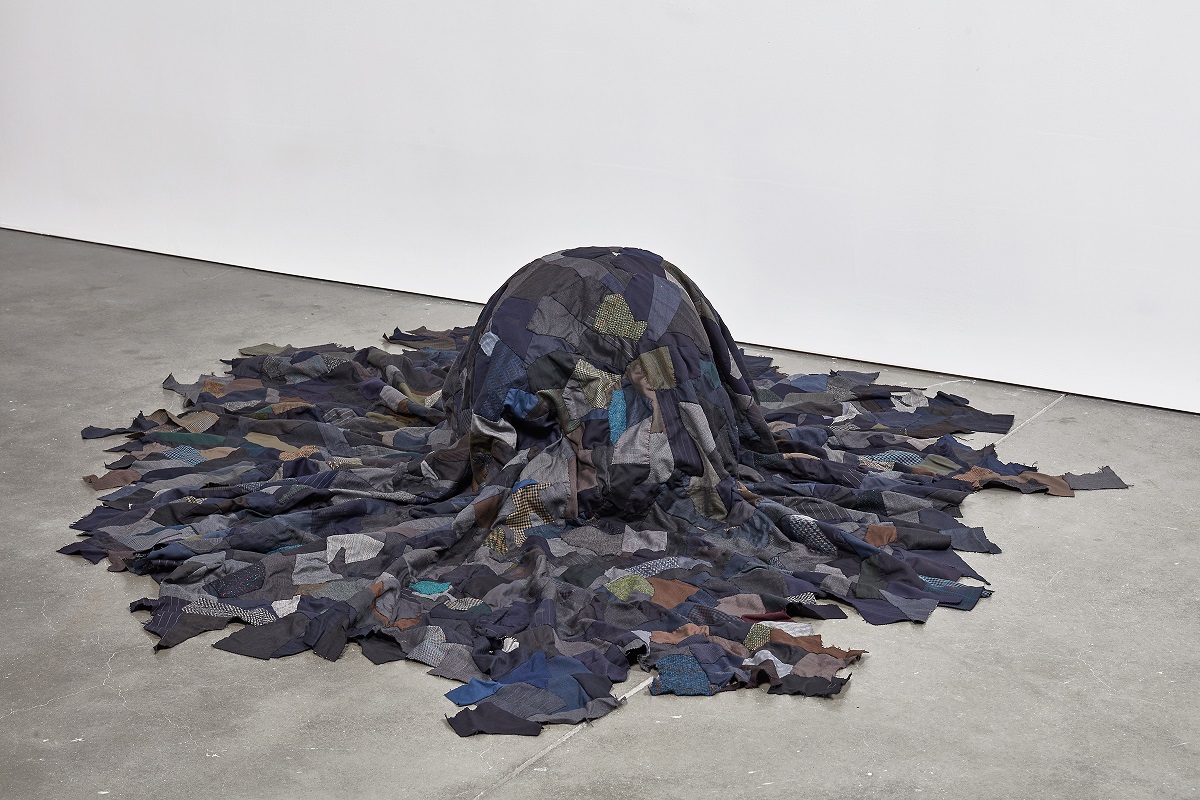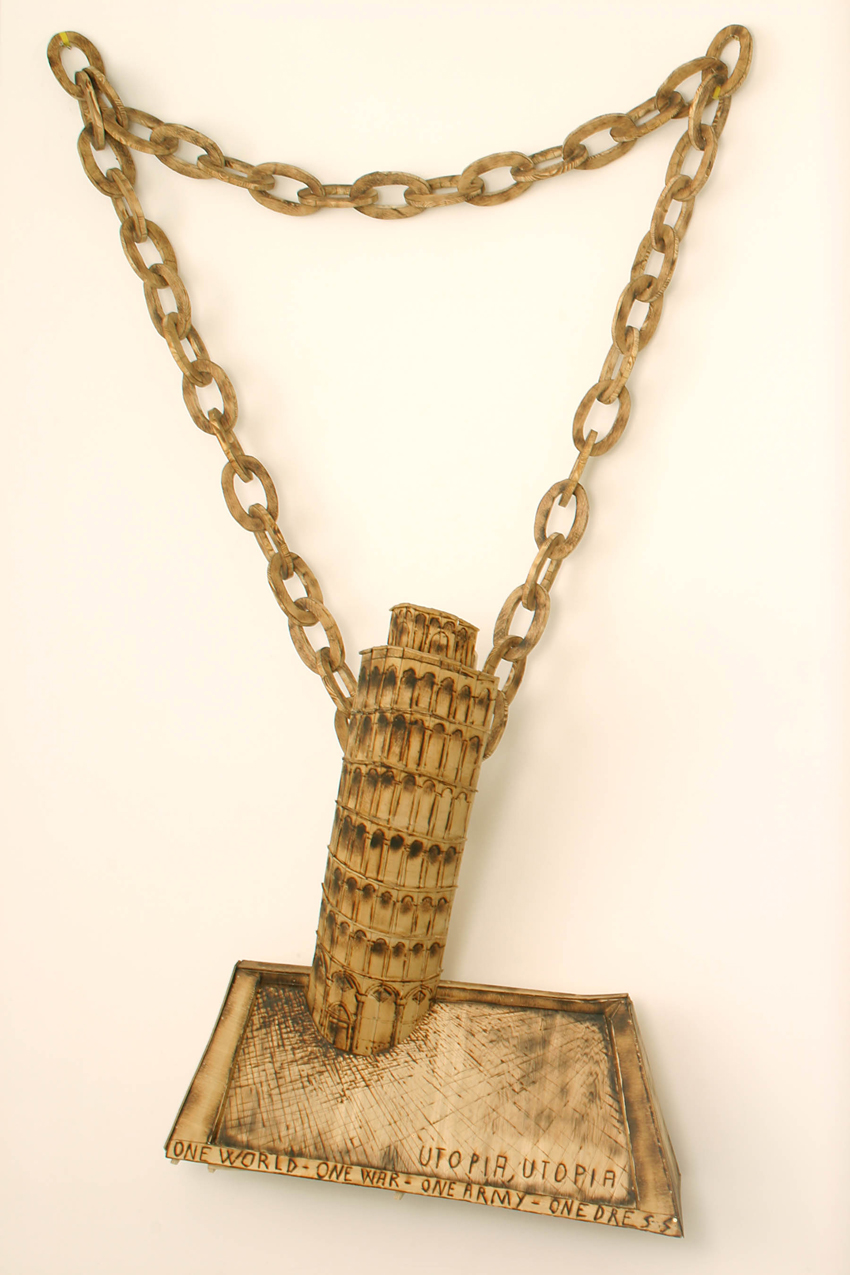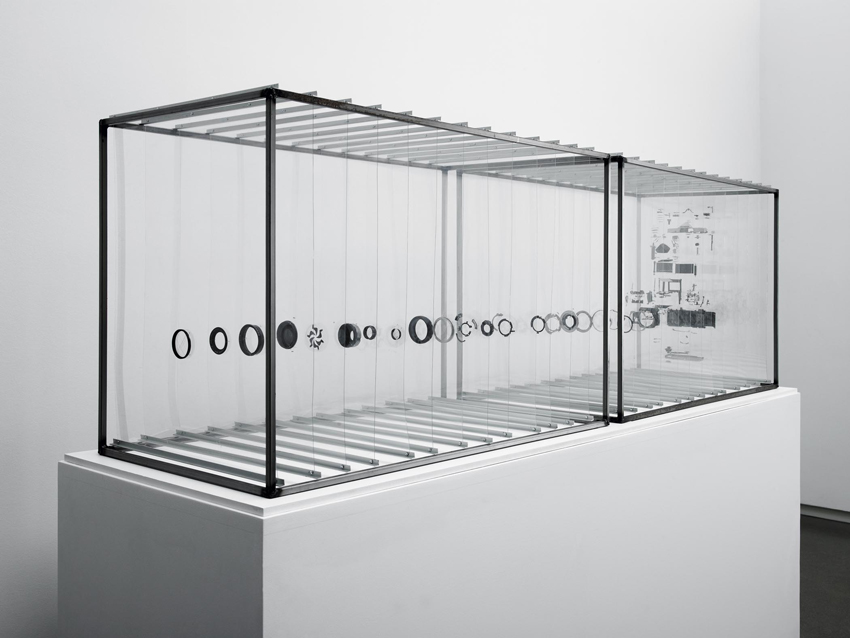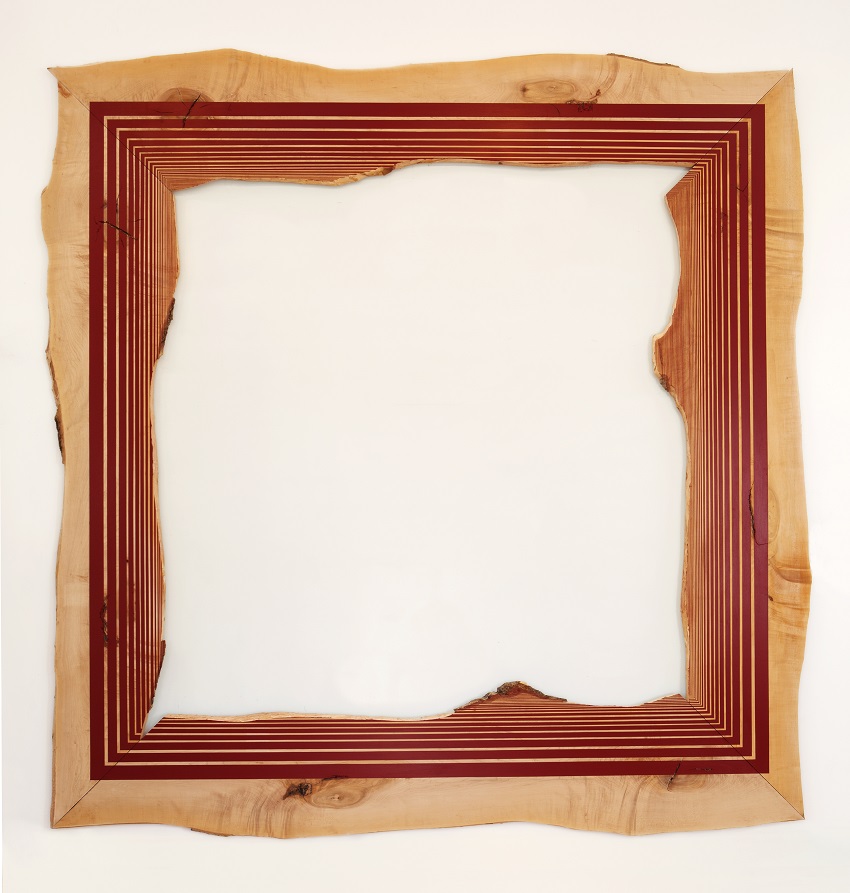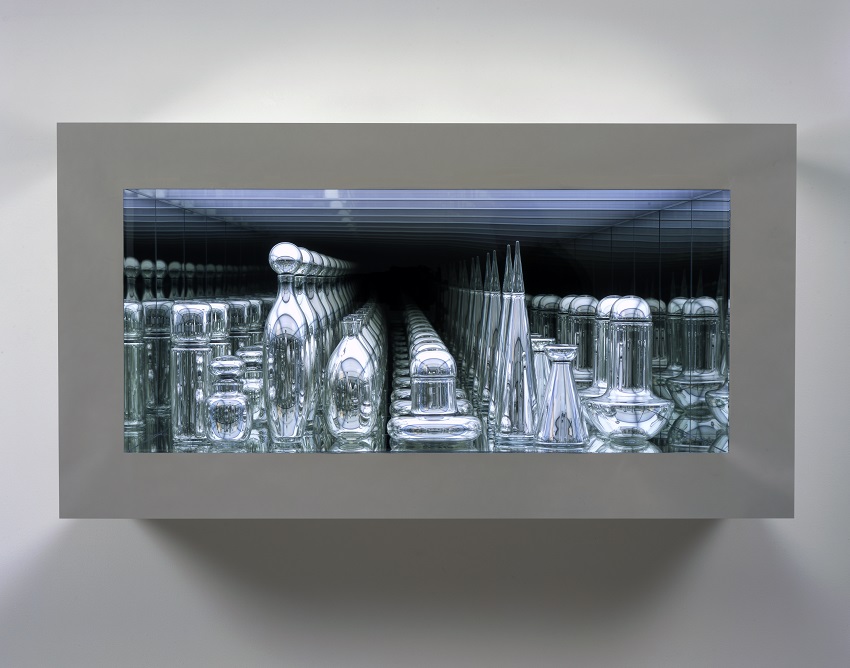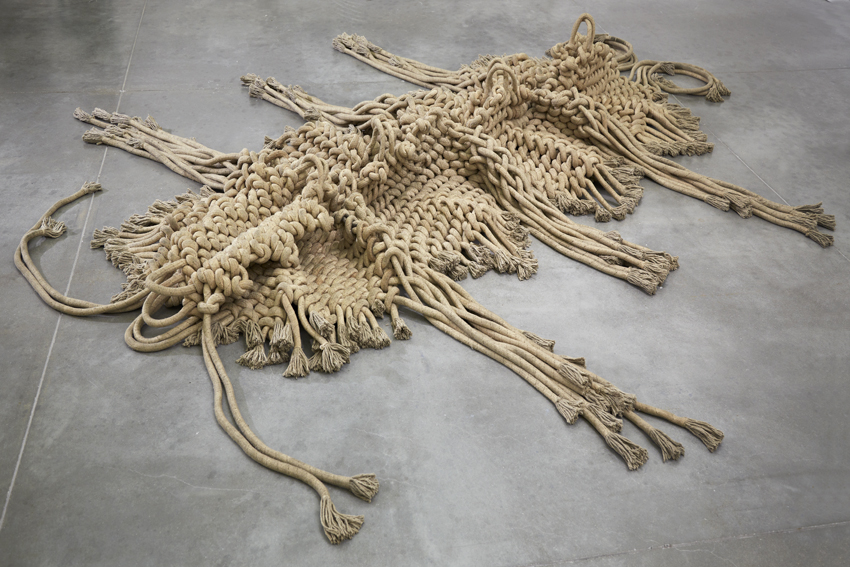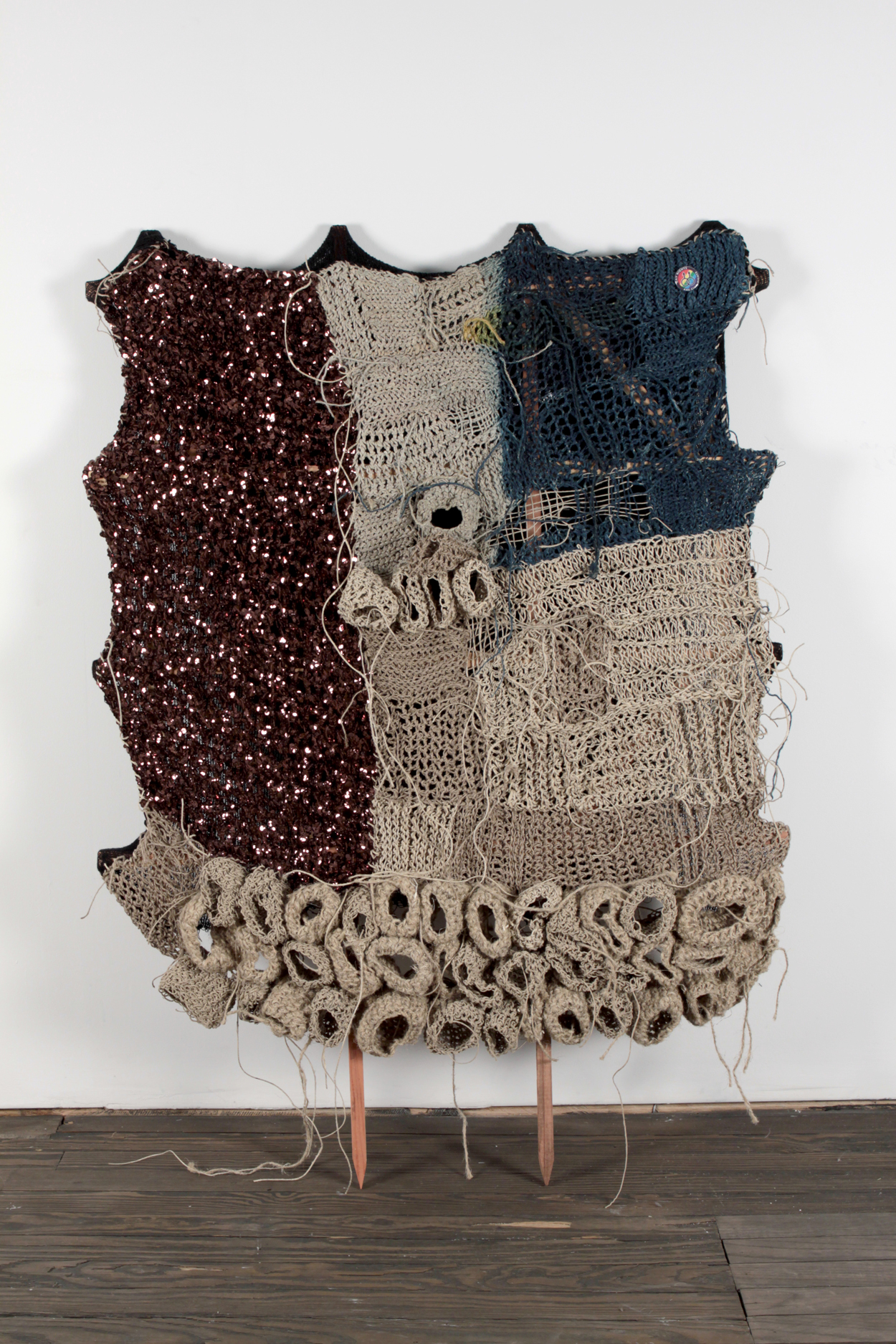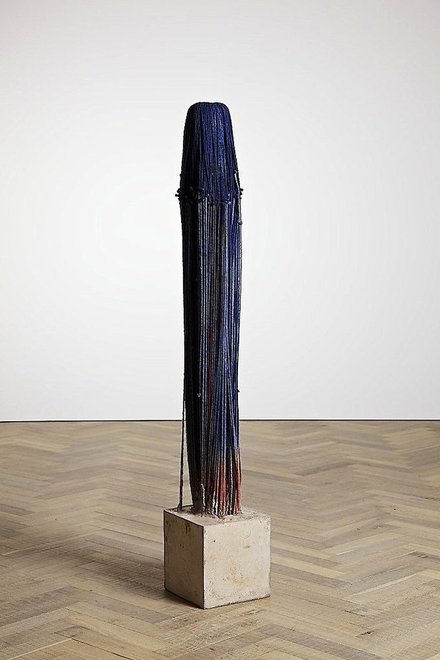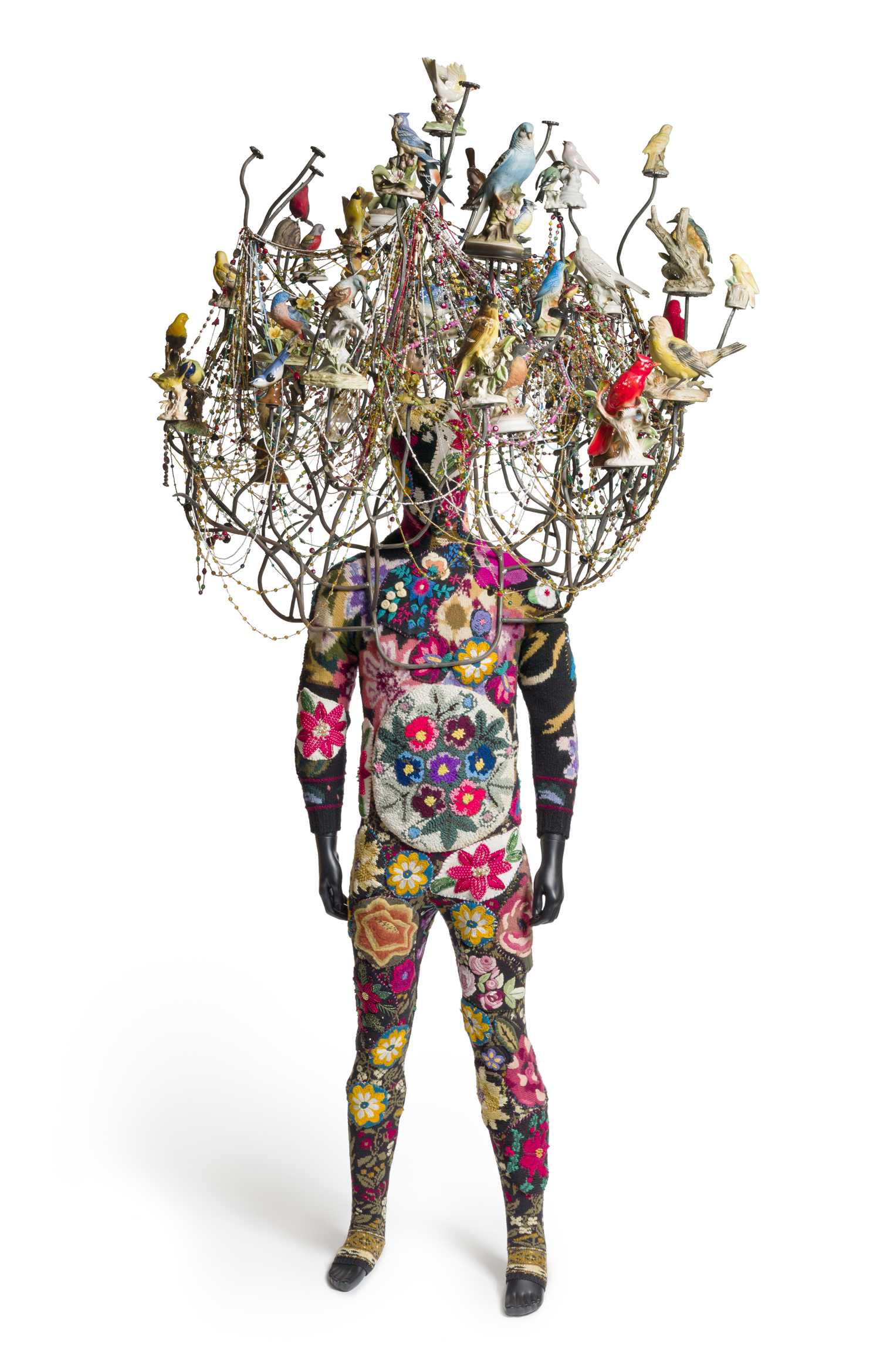Josh Faught’s sculptures are layered with seemingly contradictory elements that exist side by side: abstraction and representation, high art and kitsch, embarrassment and pride, and activism and disengagement. He invokes tensions by juxtaposing such incongruous materials as yarn, hemp, wool, linen, sequins, pins, and cast-off items ranging from self-help books to ceramic casts. He works these media using techniques that include crochet, collage, weaving, dyeing, and painting. The resulting assemblages offer critical commentary on the complexity of human relationships in the domestic sphere in which many of their components originate. His labor-intensive work draws on histories of gender and sexual politics, precariously balancing an urgent sense of anxiety with a nostalgic view of the present.
Untitled exemplifies Faught’s nonobjective work, generating visual interest primarily through shape, color, textural variation, and spatial effects. Segments of gray hemp are sewn together to form an approximate square, broken up by a swatch of woven indigo yarn in the upper right corner and a vertical band of burgundy sequins along the left edge. Crocheted barnacles line the bottom border and punctuate the center, and loose strands of yarn drip haphazardly across the surface. The entire textile is stretched over a wooden garden trellis like a canvas on an easel, inviting analogies with painting. The dangling, gestural threads subtly suggest the expressive brushstrokes of abstract expressionism, while the roughly rectilinear monochrome grid recalls the color field movement. For Faught, abstraction and activism are not mutually exclusive. He describes his artistic process as “constantly jamming together material histories until they become simultaneously abstract and narrative,” and notes that the evocative nature of his media enables his art to be simultaneously abstract and referential. Rather than illustrating his ideas, his work implies his agenda through playful puns on the materials. For example, the trellises that hold up Untitled symbolize social support systems, while their pointed posts suggest the idea of staking a claim or position. In some cases, Faught lashes together his own wooden armatures with survival knots—a metaphor for urgency and resilience. However, the allusions in his work are not always so direct. Sequins, for instance, suggest the performative nature of gender identity in general, and drag costuming in particular. Sequins, pins, and other memorabilia indirectly invoke gay countercultures and communities.
Untitled is a major work by this critically important yet under-recognized artist. The relation to works by Tara Donovan, Mona Hatoum, Sheila Hicks, and Faith Wilding in the ICA/Boston collection illustrates a way of making sculpture far outside the conventional trajectories of the medium’s history.
2014.02
